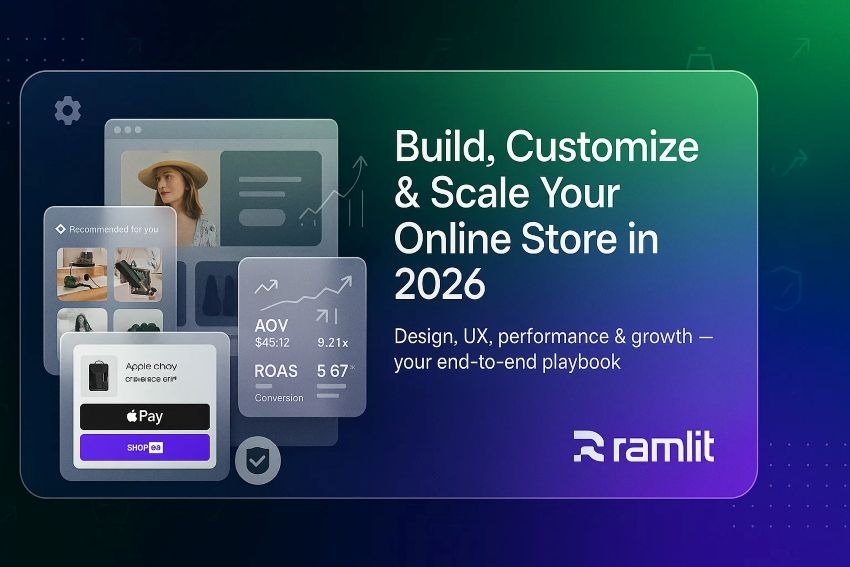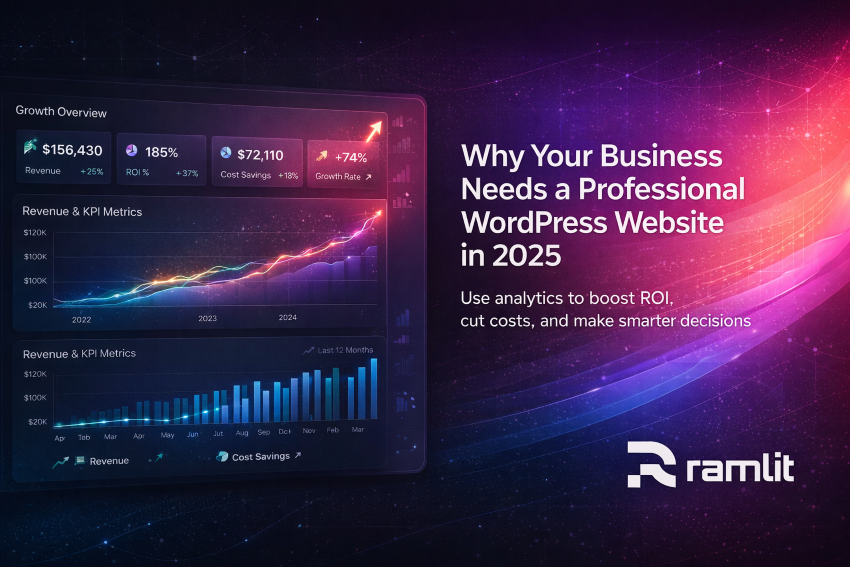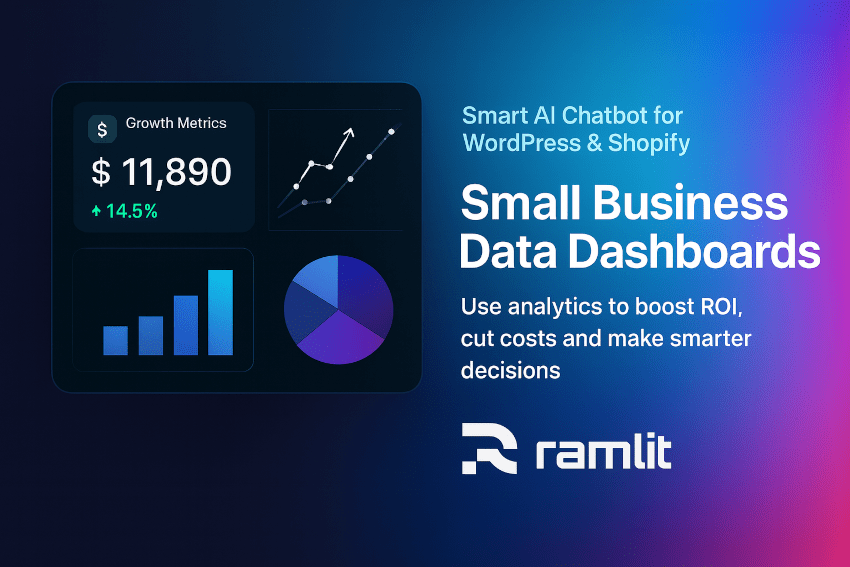Introduction
The eCommerce world is evolving faster than ever. In 2026, online shoppers expect personalized experiences, mobile-first designs, and lightning-fast performance. Whether you’re starting from scratch or upgrading an existing store, the rules of success have changed — and understanding them can make or break your online business.
This guide is built for entrepreneurs, business owners, and creators who want to build a store that not only looks great but actually converts visitors into loyal customers.
By the end, you’ll know exactly how to:
- Build a solid foundation for your eCommerce store
- Customize it for maximum user experience and conversions
- Scale efficiently with modern marketing, automation, and analytics
Let’s dive into how to turn your online store into a profitable, future-ready business in 2026.
Step 1: Laying the Foundation — Choose the Right eCommerce Platform
Your store’s foundation determines everything from design flexibility to scalability. The right platform lets you manage products, payments, and customer experiences with ease.
Top Platforms for 2026
- Shopify – Ideal for ease of use and scalability
- WooCommerce – Perfect for WordPress users who want flexibility and control
- BigCommerce – Excellent for large catalogs and enterprise-level growth
- Squarespace / Wix – Great for creatives and small stores
What to Consider When Choosing
- Ease of customization: Can you change layouts, colors, and checkout easily?
- Payment options: Does it support multiple gateways (PayPal, Stripe, local methods)?
- SEO performance: Clean URLs, fast loading, and mobile optimization
- Scalability: Can it handle traffic spikes and future growth?
- Support ecosystem: Look for reliable documentation and plugin communities
💡 Pro Tip: If you plan to scale, start with a platform that supports advanced integrations — not just a pretty design.
Step 2: Designing a High-Converting Storefront
Your store design directly affects how long visitors stay — and whether they buy. A professional, intuitive interface builds trust instantly.
Key Design Principles for 2026
- Minimalism with depth: Use clean layouts with bold typography and subtle motion.
- Mobile-first experience: Over 75% of eCommerce traffic now comes from mobile devices.
- Interactive visuals: Use video product previews or 3D mockups for engagement.
- Accessibility compliance: Alt-text, color contrast, and keyboard navigation matter for SEO and inclusivity.
Essential Pages to Perfect
- Homepage: Clear brand value, featured products, and social proof.
- Product pages: Use high-quality images, benefit-led descriptions, and trust badges.
- Checkout page: Reduce friction — one-page checkout, guest options, and auto-fill.
- About page: Humanize your brand; share your story and mission.
🧭 Conversion Tip: Place CTAs (Add to Cart, Buy Now) above the fold and repeat them strategically throughout your product pages.
Step 3: Customization for User Experience and Branding
Customizing your store goes beyond visuals — it’s about creating a seamless journey that aligns with your brand identity and builds trust.
Core Areas to Customize
- Brand identity: Use consistent colors, fonts, and tone of voice.
- Navigation: Organize menus and filters logically — fewer clicks = better UX.
- Personalization: Recommend products based on browsing or purchase history.
- Email and SMS touchpoints: Match your design language and tone across all communication.
Advanced Customization Ideas
- Integrate AI-driven search and chat support.
- Add loyalty or referral programs for retention.
- Offer “build your own bundle” features for interactive engagement.
- Create dark/light mode toggles for modern UX appeal.
Step 4: Building Trust with Secure and Smooth Operations
In 2026, trust is everything. Shoppers expect fast, secure, and transparent shopping experiences.
Security Essentials
- Enable SSL certificates (HTTPS) to protect transactions.
- Use PCI-compliant payment gateways like Stripe or PayPal.
- Regularly update plugins and extensions to avoid vulnerabilities.
- Add a privacy policy and refund guarantee to reassure customers.
Performance Optimization
- Use a CDN (Content Delivery Network) for global speed.
- Compress images without quality loss.
- Minimize scripts and optimize caching.
- Implement lazy loading for media-heavy pages.
⚡ Pro Insight: Every extra second of page load time can drop conversion rates by up to 20%.
Step 5: Inventory, Logistics, and Product Management
An efficient back-end is the engine behind every thriving eCommerce brand.
Inventory Best Practices
- Use inventory management tools like Zoho Inventory or TradeGecko.
- Enable automatic stock updates and alerts for low inventory.
- Categorize products with clear naming conventions and SKUs.
Shipping and Fulfillment
- Offer multiple delivery options (standard, express, same-day).
- Partner with reliable couriers or integrate dropshipping suppliers.
- Display transparent shipping times and fees to build confidence.
Step 6: Marketing and Growth — Turning Visitors into Buyers
A beautiful store without traffic is like a billboard in the desert. You need a strategic marketing engine that attracts, nurtures, and converts.
Organic Growth (SEO & Content)
- Target long-tail keywords around your products.
- Publish educational blog content that answers buyer questions.
- Optimize product titles, meta tags, and schema for rich snippets.
- Create internal links between related products and guides.
Paid Growth (Ads & Retargeting)
- Use Google Shopping Ads for product visibility.
- Retarget visitors with Meta (Facebook/Instagram) ads.
- Experiment with TikTok Spark Ads for product storytelling.
Email & Retention Marketing
- Offer discounts or lead magnets for first-time signups.
- Segment audiences by behavior (e.g., repeat buyers, cart abandoners).
- Automate post-purchase follow-ups and feedback requests.
💬 Smart Move: Combine retargeting ads + personalized email flows to recover lost sales and build long-term loyalty.
Step 7: Scaling Your Store in 2026 and Beyond
Once your sales start growing, scaling sustainably is key. Growth should improve profit margins — not break your infrastructure.
Scalability Framework
- Automate repetitive tasks: Use tools like Zapier or Make (Integromat).
- Expand to new channels: Sell on Amazon, eBay, or via social commerce.
- Leverage analytics: Use GA4, Hotjar, or Mixpanel for behavioral insights.
- Hire strategically: Delegate operations, customer service, or ad management.
- Go global: Localize your website and payment options for international buyers.
Sustainable Scaling Mindset
- Prioritize customer lifetime value (CLV) over one-time sales.
- Keep optimizing checkout and retention funnels.
- Monitor data, not assumptions — test, iterate, repeat.
Bullet Points / Quick Takeaways
- Choose a scalable, SEO-friendly platform from day one.
- Focus on a conversion-optimized design that builds trust instantly.
- Personalize user experiences to increase loyalty and repeat sales.
- Secure your store with HTTPS and updated integrations.
- Use data-driven marketing for growth — not guesswork.
- Automate and delegate as you scale.
Call to Action (CTA)
Ready to build your 2026-ready online store? Start today with a platform that supports your long-term growth. Whether you choose Shopify, WooCommerce, or another solution — take the first step toward a profitable, future-proof eCommerce business.
FAQ Section
1. What’s the best platform to build an online store in 2026?
Shopify and WooCommerce continue to lead for flexibility and scalability. Choose based on your technical comfort, design control, and budget.
2. How much does it cost to start an online store?
Depending on your platform, theme, and tools, expect $200–$1,000 to launch professionally. Factor in hosting, domain, and marketing expenses.
3. How can I drive more traffic to my store?
Focus on SEO, social media marketing, and paid ads. Blog consistently, build backlinks, and use email funnels to nurture repeat buyers.
4. How do I scale my online business effectively?
Automate operations, analyze performance metrics, expand channels, and hire specialized help as revenue grows.
5. Is dropshipping still profitable in 2026?
Yes — but only with quality suppliers, unique branding, and a strong customer experience. Focus on value differentiation, not price wars.
Final Word: Building, customizing, and scaling an online store in 2026 isn’t just about tools — it’s about strategy. The winners will be brands that combine technology, design, and customer understanding to deliver unmatched experiences. Start smart, stay consistent, and you’ll build something that lasts.
Would you like me to create a SEO keyword map (primary + secondary + semantic terms) for this article next — so you can rank faster?




